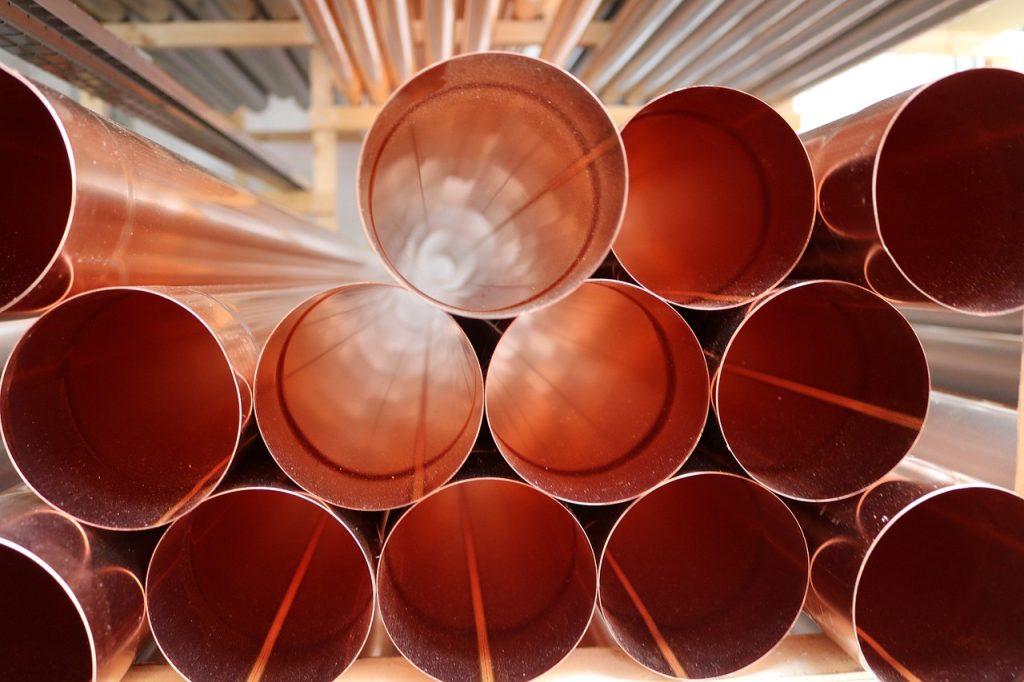Boost Your Craftsmanship with High-Performance Copper Products for Artisans
Boost Your Craftsmanship with High-Performance Copper Products for Artisans
Blog Article
Exactly How Copper Products Contribute to Lasting Practices in Various Industries
Copper products are significantly identified for their considerable contributions to sustainable practices across multiple sectors, driven by their integral buildings such as durability, recyclability, and performance. In renewable resource systems, as an example, copper improves the performance of solar and wind technologies, while its application in building and construction decreases waste with longevity. The material's antimicrobial characteristics supply promising benefits in medical care setups. As markets seek to take on even more lasting methods, the duty of copper could confirm critical in achieving ecological objectives. What implications might this have for future developments in sustainability?
Copper in Renewable Energy
Copper plays an important function in the innovation of eco-friendly energy innovations, serving as an important conductor in different applications. Its extraordinary electrical conductivity and resistance to corrosion make it a perfect material for electrical wiring, which is essential in solar panels, wind generators, and energy storage systems. In solar photovoltaic or pv systems, copper is utilized in the interconnections and circuitry, enabling reliable energy conversion from sunlight to electrical energy.
In wind energy, copper is integral to the generators and transformers that transform kinetic energy into electric energy, guaranteeing optimum performance and reliability. Moreover, the need for electrical cars (EVs) is boosting, with copper being an essential element in batteries, motors, and billing infrastructure. The transition to EVs dramatically improves the need for copper, as these automobiles commonly utilize 4 times more copper than traditional inner burning engine lorries.
As the world seeks to mitigate environment change and change to lasting power resources, copper's duty becomes increasingly critical. The material not only boosts the effectiveness and sturdiness of eco-friendly power systems yet additionally sustains the broader objective of reducing greenhouse gas discharges and advertising a sustainable future.
Eco-Friendly Construction Materials
Recently, there has been a remarkable shift towards the adoption of eco-friendly building and construction materials in feedback to growing environmental concerns. This adjustment is motivated by the demand for lasting choices that reduce eco-friendly impacts while keeping structural stability and visual charm.
Copper, understood for its resilience and recyclability, has become a principal in this market. It can be utilized in roof, pipes, and electrical systems, contributing to energy performance and reducing waste. Copper's long life implies less substitutes over time, further improving its sustainability profile.
Furthermore, products such as bamboo, recovered timber, and reused steel are gaining popularity. These alternatives not only provide minimized environmental effect yet likewise advertise resource conservation. As building codes increasingly emphasize sustainability, home builders and designers are integrating these products right into their tasks, fostering development in layout.
The enhancing fostering of eco-friendly construction products reflects a wider dedication to sustainability in the built atmosphere. By prioritizing these products, the building market can dramatically lower its carbon impact, straighten with regulatory criteria, and support a healthier ecosystem for future generations. This trend notes a pivotal step towards a much more lasting future in building.
Copper's Function in Medical care
Current research studies have highlighted the significant role of copper in healthcare setups, particularly because of its antimicrobial residential properties. Copper surfaces have actually been shown to decrease the visibility of like it virus, including microorganisms and viruses, by up to 99.9% within a brief duration. This remarkable efficacy makes copper an indispensable material for high-touch surfaces in health centers, such as doorknobs, bed rails, and IV posts, consequently adding to enhanced infection control procedures.
Along with its direct antimicrobial results, copper likewise contributes in the wider context of medical facility sustainability (Copper Products). By including copper into medical devices and home furnishings, healthcare facilities can decrease the occurrence of healthcare-associated infections (HAIs), which not only boosts individual outcomes yet also reduces the costs connected with prolonged hospital remains and extra treatments
Furthermore, copper's durability and recyclability align with sustainable methods, enabling responsible resource administration. As healthcare systems increasingly focus on both patient safety and environmental stewardship, the integration of copper items is coming to be more common. This double benefit emphasizes copper's vital payment to a healthier, much safer, and more sustainable healthcare environment.
Sustainability in Transportation

In addition, copper's toughness and corrosion resistance contribute to the longevity of transport infrastructure (Copper Products). In rail systems, as an example, copper parts improve the integrity and efficiency of signaling and power systems, vital for decreasing hold-ups and energy usage. In addition, copper's duty in renewable power systems, such as solar and wind, sustains sustainable transportation remedies by giving tidy power for electrical transportation alternatives
Investments in copper modern technology not only foster sustainability but also boost economic development and job creation in green industries. As sectors strive to fulfill stringent environmental guidelines, the application of copper items in transportation arises as a pivotal approach in accomplishing sustainability goals and advertising a cleaner, more efficient future.
Copper and Round Economic Situation
As the world increasingly embraces sustainability, the role of copper in the round economic climate ends up being ever before much more considerable. Copper's intrinsic homes-- such as its durability, recyclability, and conductivity-- position it as an essential product in a resource-efficient economic situation. The round economic climate aims to decrease waste and make the most of resource usage through recycling and reusing products, and copper excels in this regard.
The steel can be recycled forever without loss of top quality, making it a suitable prospect for lasting practices throughout various markets, consisting of construction, electronics, and sustainable power. By recuperating and reprocessing copper from end-of-life products, markets can substantially lower the need for virgin materials, consequently lowering ecological effects associated with mining and processing.
Additionally, the combination of copper right into circular economic situation frameworks not only preserves resources but additionally cultivates technology. Organizations that focus on copper reusing add to an extra sustainable official statement supply chain, enhancing their competitiveness while straightening with regulatory needs and consumer preferences for ecologically accountable products.
Final Thought
To conclude, copper read this products considerably add to lasting practices across numerous industries. Their vital function in enhancing renewable resource modern technologies, promoting green building and construction materials, sustaining infection control in health care, promoting sustainable transportation, and personifying the concepts of a round economic situation highlights the convenience and importance of copper. By incorporating copper into various applications, sectors can achieve higher performance, lower ecological influence, and line up with international sustainability goals, eventually promoting a much more lasting future.

Copper's outstanding conductivity makes it a recommended material in electric automobile (EV) systems, boosting power performance and performance. In addition, copper's function in eco-friendly power systems, such as solar and wind, sustains sustainable transportation services by giving tidy energy for electric transit options.
Their essential role in improving eco-friendly power innovations, advertising environment-friendly building and construction materials, supporting infection control in healthcare, facilitating sustainable transportation, and symbolizing the concepts of a round economic situation underscores the flexibility and significance of copper.
Report this page